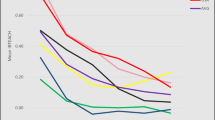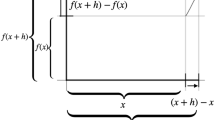Abstract
This paper briefly reviews Brazilian textbook policies during the twentieth century, and pays careful attention to its latest development, PNLD—Programa Nacional do Livro Didático (National Textbook Program) and its textbook assessments, which selects textbooks that are freely distributed by the Ministry of Education (MEC) to students of public elementary, middle and high schools. We focus on the mathematics textbook assessments, describing their evolution and commenting on some of their accomplishments and problems. The first assessment was carried out for the 1997 school year and retained basically its initial formulation, with changes and improvements, til the assessment for the 2018 school year. As of now, the program is undergoing substantial changes which are briefly discussed and which worry many educators. This assessment was responsible for a definite improvement of mathematics textbooks for elementary, middle and high schools in Brazil. It constitutes a good example of a successful program, coordinated by competent persons from mathematics education, schools of education and mathematics departments of good universities, at first without political interference, and strongly backed by powerful officials in MEC. In the last few years, pressures from publishers and conservative groups have undermined the assessments, with possibly serious consequences.

Similar content being viewed by others
Notes
In Brazil, elementary and middle schools are the responsibility of counties, while States are responsible for high schools. Both counties and states can decline receiving the books.
The school grades and subjects covered have augmented through the years, until reaching their present state.
Instituted by laws no 5.537, of November 21, 1968 and no 872, of September 15, 1969.
Decreto Lei no 91,542.
The mathematics commission had five members, representing various scientific and educational associations: Anna Franchi, Iara Augusta da Silva, João Bosco Pitombeira de Carvalho (coordinator), Martha Maria de Souza Dantas and Tânia Maria Mendonça Campos.
They are all available in the Guias do livro didático for these years, at http://www.fnde.gov.br/livrodidatico/PNLD/guias.
These statements are based on the personal files of the author, which include all the assessments’ reports from all mathematics books, from PNLD 2002 through PNLD 2018.
An ongoing project undertaken by this author and other persons involved with the mathematics assessments has already listed almost 130 MsC or PhD dissertations dealing with mathematics textbooks or PNLD policies, and there are many more to locate.
Law 7084 of January 27, 2010.
Law 12,527 of November 18, 2011.
Since PNLD 1997, publishers had successfully prevented MEC from issuing the lists of excluded books, but now anyone can have access to this information.
Law 8069 of 1990.
Law 10,741 of October 1st 2003.
From PNLD 2019 on, MEC will carry out the assessment directly.
This part deals with the assessment structure until PNLD 2018. Things have changed substantially starting with PNLD 2019, which is already under way.
A conditionally accepted collection has small mistakes that must be corrected before it is approved.
Until this meeting, they were a “blind pair”: each one of them did not know who the other one was.
All the catalogues, from the very first one, can be downloaded from http://www.fnde.gov.br/programas/livro-didatico/guias-do-pnld.
Personal files of the author.
It was necessary to separate the two assessments, because for PNLD 1999 publishers presented books for some or all of the grades, fifth through eight, not collections, and these books were assessed individually, not as part of a collection.
Personal files of the author.
Mathematics for these early years is called alfabetização matemática, that is, mathematical literacy.
Only in 2012 did the high school textbooks assessments become part of PNLD.
Personal files of the author, covering all the assessments, from PNLD 1997 through PNLD 2018.
References
Araújo, E. (1986). A Construção do Livro. Princípios da Técnica de Editoração. Rio de Janeiro/Brasília: Nova Fronteira/INL.
Baquero, R. V. A., & Ribeiro, M. J. S. (1985). Critérios para a seleção de livros-texto de matemática para o 2° grau e concepções dos professores sobre educação. Tecnologia Educacional, 14(66/67), 31–42 (set/dez).
Bardin, L. (1991). Análise de conteúdo (p. 70). Lisboa: Edições.
Boton, J. M. (2014). O processo de escolha do livro didático por professores: a evolução do PNLD e seus efeitos no ensino de ciências. Dissertação (Mestrado em Educação e Ciências). Universidade Federal de Santa Maria.
Brasil (1988). Constituição da República Federativa do Brasil. Brasília: Senado Federal.
Britto, T. F. (2011). O livro didático, o mercado editorial e os sistemas de ensino apostilados. Brasília: Centro de estudos da consultoria do Senado.
Carvalho, J. B. P. (forthcoming). Textbooks for millions: The Brazilian mathematics textbook assessment program. Proceedings of the II International Conference on Mathematics Textbook Research and Development. Rio de Janeiro: UFRJ.
Cassiano, C. C. F. (2005). Reconfiguração do Mercado brasileiro de livros didáticos no início do século XXI. Em Questão, Porto Alegre, v. 11, n. 2 jul/dez, jul./dez. pp. 281–312.
Cassiano, C. C. F. (2007). O Mercado do livro didático no Brasil: da criação do Programa Nacional do Livro Didático (PNLD) à entrada do capital internacional espanhol (1985–2007). Tese de doutorado, PUC-SP.
Dassie, B. A. (2012). Comissão Nacional do Livro Didático após 1945 e os livros de matemática aprovados para uso no ensino secundário. Revista HISTEDBR On-line. Campinas, SP, vol. 47, pp. 88–107.
Earp, F. S., & Kornis, G. (2005). A economia do livro: a crise atual e uma proposta de política. Rio de Janeiro: UFRJ, Instituto de Economia. (TD 004/2005).
Ferreira, R. C. C. (2008). A Comissão Nacional do Livro Didático durante o Estado Novo (1937–1945). Assis: Dissertação de Mestrado. UNESP.
Filgueiras, J. M. (2011). Os processos de avaliação de livros didáticos no Brasil (1938–1984). Tese de doutoramento: PUC-SP, São Paulo.
FIPE (Fundação de Pesquisas Econômicas) (2016). Produção e vendas do setor editorial brasileiro. São Paulo, SP.
Freitag, B. et al. (1987). O estado da arte do livro didático no Brasil. Brasília: INEP/REDUC.
Freitag, B., et al. (1989). O livro didático em questão. São Paulo: Cortez/Autores Associados.
Gérard, F., & Roegiers, X. (1993). Concevoir et évaluer des manuels scolaires. Bruxelles: De Boeck-Wesmäel.
Hariki, S. (1992). Analysis of mathematical discourse: multiple perspectives. Doctoral dissertation, University of Southampton.
Hariki, S. (1994). Para uma análise do discurso matemático. Seminário sobre novas perspectivas da educação matemática no Brasil. Brasília: INEP. Série Documental, Eventos, n. 4, 1ª parte.
Höfling, E. M. (1998). O padrão de descentralização na implementação do Programa Nacional do Livro Didático. Anais do XXII Encontro Nacional da ANPOCS.
INEP (1996) Livro didático e qualidade de ensino. Em aberto, Brasília, ano 16, n. 69 jan./marc.
INEP (1987). O livro didático. Em aberto, Brasília, ANO 6 o, n. 35, jul/set.
Keitel, C., Otte, M., & Seeger, F. (1980). Text, Wissen, Tätigkeit. Königstein: Scriptor.
Mantovani, K. P. (2009). O Programa Nacional do Livro Didático - PNLD. Tese de doutorado, USP: Impaco na qualidade dos livros.
MEC, FAE, PNLD (1994). Definição de critérios para avaliação de livros didáticos. Português, matemática, estudos sociais e ciências, 1ª a 4ª séries. Brasília: FAMEC–UNESCO.
Meksenas, P. (1992). A produção de livros didáticos: sua relação com o estado, autor e editor. Dissertação de mestrado, Faculdade de Educação. São Paulo: USP.
Moysés, M. M. (1985). O cotidiano do livro didático na escola: as características do livro didático e os alunos. Brasília: INEP.
Munakata, K. (1997). Produzindo livros didáticos e paradidáticos. Tese de doutorado, PUC-SP.
Oliveira, J. B. A., Guimarães, S. D. P., & Bomény, H. M. B. (1984). A política do livro didático. São Paulo: Summus; Campinas, SP: Editora da Unicamp.
Otte, M. (1986). What is a text. In B. Christiansen, A. G. Howson & M. Otte (eds.), Perspectives on mathematics education (pp. 172–203). Dordrecht: D. Reidel.
Pfromm Neto, S., Rosamii, I., & Zaki, C. D. (1974). O livro na educação. Rio de Janeiro: Primor/INL.
Richaudeau, F. (1979). Conception et Production des Manuels Scolaires. Guide pratique. Paris: Unesco.
Romanini, M. G. (2013). A análise do processo de implementação de política: o Programa Nacional do Livro Didático-PNLD. Tese (Doutorado em Educação) UNICAMP, Faculdade de Educação.
Soares, F. S. (2003). Passado e ‘Presente: O PNLD e a Comissão Nacional do Livro Didático—uma análise comparativa. 11° Seminário Internacional de Pesquisa em· Educação Matemática (SIPEM), Santos, de 29 de outubro a 01 de novembro de 2003. Anais. CD ROM.
Soares, F. S. (2013). Adoção, avaliação e circulação de livros didáticos de Matemática no século XIX. Zetetiké FE/Unicamp v. 21, n. 40, jul/dez.
Soares, F. S., & Rocha, J. L. (2005). As políticas de avaliação do livro didático na Era Vargas: A Comissão Nacional do Livro Didático. Zetetiké, CEMPEM, FE, Unicamp, v. 13, n. 24, jul./dez, pp. 81–112.
Torres, R. M. (2000). Melhorar a qualidade da educação básica? As estratégias do Banco Mundial. In De L. Tommasi, M. J. Warde & S. HADDAD (orgs), O Banco Mundial e as políticas educacionais (3ed). São Paulo: Cortez/PUC.
UNICAMP (1989). O que sabemos sobre o livro didático: catálogo analítico. Campinas: Biblioteca Central da Universidade Estadual de Campinas; Setor de Informação sobre o Livro Didático; Editora da UNICAMP.
Van Dormolen, J. (1986). Textual analysis. In B. Christiansen et al. Perspectives on mathematics education. D. Reidel, pp. 141–171.
Venezky, R. L. (1992). Textbooks in school and society. In P. W. Jackson (Ed.), Handbook of research on curriculum. New York: MacMillan.
Worthen, B. et al. (1987). Educational evaluation. New York: Longman.
Zúñiga, N. O. C. (2007). Uma análise das repercussões do Programa Nacional do Livro Didático no livro didático de matemática. Belo Horizonte: Tese de doutoramento. Universidade Federal de Minas Gerais.
Acknowledgements
The author wishes to thank the editors and the referees, whose suggestions contributed to this paper’s improvement.
Author information
Authors and Affiliations
Corresponding author
Rights and permissions
About this article
Cite this article
de Carvalho, J.B.P. The Brazilian mathematics textbook assessments. ZDM Mathematics Education 50, 773–785 (2018). https://doi.org/10.1007/s11858-018-0949-x
Accepted:
Published:
Issue Date:
DOI: https://doi.org/10.1007/s11858-018-0949-x




